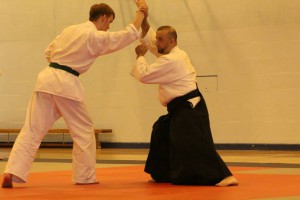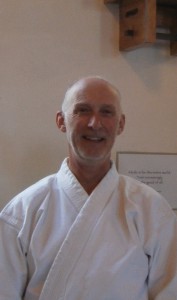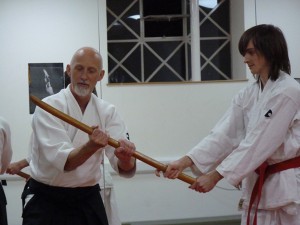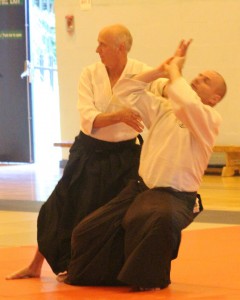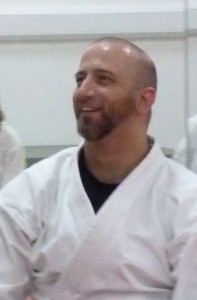Nobody wins nobody loses by Mark Peckett
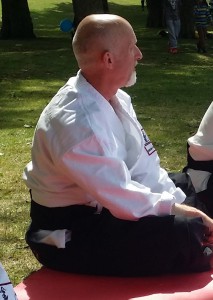 In economic theory there is a concept known as “The Zero-Sum Game”. It is a competitive concept in which if what is lost by one side is subtracted from what is won by the other, the result is zero.
In economic theory there is a concept known as “The Zero-Sum Game”. It is a competitive concept in which if what is lost by one side is subtracted from what is won by the other, the result is zero.
You can probably already see where I’m going with this. Living in communities as we do, we measure a lot of our life with a “Zero-sum mentality”, assuming that everything is a game, and therefore there must always be a winner and a loser, a gain and a loss.
And even if we can’t win we can always try to minimise our opponent’s payoff. This is called “the punishing-the-opponent standard”.
The opposite of all this is referred to as non-zero-sum. For example, a country with an excess of bananas trades with another country for their excess of apples and both benefit from the transaction.
It’s no surprise that the concept of the zero-sum game is deeply rooted in economics. Industry engages in zero-sum competition – the competition to take customers away from each other, and it manifests itself on the high street and in adverts on television all the time.
But in the long run it is simply not sustainable: manufacturers are constantly trying to find ways to lower their costs and so force their suppliers, often located in developing countries, to lower their costs often at the expense of either the environment and/or society.
And it doesn’t have to apply at the macro-economic level. Each and every day we engage in little zero-sum games. Petty squabbles with the family over breakfast, aggressive drivers on the way to work who make us drive aggressively in turn, one-upmanship with colleagues at work.
Aikido teaches us that there is another way. Someone doesn’t have to lose so that we can win. Probably when we take it up, we may not be thinking like that; we want to learn to defend ourselves, we have a picture in our head of defending our family with some Bruce Lee moves, and then being interviewed by the local newspaper as a hero. But hopefully, over time, aikido changes us.
First of all aikido should give us some confidence so that we no longer have to rise to every perceived sleight or challenge in an effort to prove ourselves (usually to ourselves, not to someone else).
One of O’Sensei’s doka (teaching verses) says:
Seeing me before him,
The enemy attacks,
But by that time
I am already standing
Safely behind him.
Now it can be taken as a purely physical teaching on aikido technique. Blending with an attack allows you to place yourself behind your opponent. Interestingly, Terry Dobson the American aikido pioneer who studied directly under the Founder translated the Japanese word “Awase” not as “blending” but as “agreeing.” If you execute a tenkan or kaiten then you find yourself looking in the same direction as your opponent and often in exactly the same position. You could call this “seeing through someone else’s eyes” or “putting yourself in someone else’s shoes.”
This, I think is one of the deeper teachings of the doka. By brushing the attack aside, the opponent must deal with the force he has generated himself. You are safe because you are no longer confronting the attack head-on, but because you also may have gained some understanding of the reason for your opponent’s assault and can act accordingly.
Koichi Tohei, founder of The Ki Society and awarded 10th dan by Morihei Ueshiba himself, said in his famous book Aikido in Daily Life, “All aikido techniques begin and end in the principle of non-dissension.” He went on to say that this did not mean being weak or not resisting:
The principle of non-dissension demands the strongest spirit and a complete supply of plus ki in body and spirit to help us avoid receiving even a little of our opponent’s mistaken ki … The way of non-dissension enables you to overcome any reversals without spiritual pain, to laugh off any slander, and to lead astray any attack, without yourself receiving the blow.
Non-dissent is not a zero-sum game.
Another analysis of living life as a game can be found in James Carse’s book “Finite and Infinite Games.” It lays out its stall completely its first three sentences:
There are at least two kinds of games. One could be called finite, the other infinite.
A finite game is played for the purpose of winning, an infinite game for the purpose of continuing the play.
Essentially, a finite game plays to achieve an end when someone has won. It springs from a specific beginning: a football match, a world war, a family argument or a falling-out with a colleague a work. And it has specific rules which are known in advance – even that row with your spouse, if you stop to think about it.
And since every game has to be won, every move is played in order to win.
But the interesting thing is that no one is forced to take up the roles within the game (even footballer players don’t have to be footballers), but once we take up the role we are surrounded by rules which compel us to play to win.
The infinite game is harder to define because it doesn’t have anything of the things that define a finite game: rules, players, and a definite end with winners and losers. Carse says:
Finite players play within boundaries; infinite players play with boundaries.
Equally within the finite game predictability is a requirement but to players of the infinite game “Surprise causes finite play to end; it is the reason for infinite play to continue.” The finite game is, like the zero-sum game, dualistic. The infinite game is, like Koichi Tohei’s aikido, one of non-dissent or non-duality. And as Zen monk Thich Naht Hanh says:
Harmful actions arise from anger, fear, greed, and intolerance, which in turn come from dualistic and discriminative thinking.
So at the very least, let us learn to not rush to the end of a technique and think we’re done, rather let us maintain the connection we have made with uke afterwards and then try and extend that connection out into the whole world.


